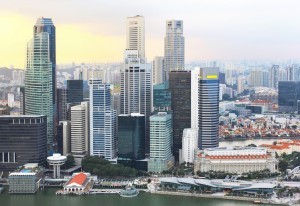Despite rising office rents, Singapore still a cost-effective location: JLL

While Singapore has been ranked the 10th most expensive place to rent Grade A and premium office space in Asia Pacific, up from 14th spot last year, it is still a cost-effective location to establish regional headquarters.
In fact, total occupancy cost in the city-state is only around US$108 psf per annum, less than a third of the US$338 psf per annum for Hong Kong’s central area, the world’s most expensive office market, according to JLL’s Global Premium Office Rent Tracker for Q4 2018.
“Singapore stacks up very competitively given that it is a global hub for multiple high-value industries and offers a high quality standard of living, yet is cheap, relative to other global hubs,” said JLL Singapore’s head of leasing, Chris Archibold.
“The net result of this is that we are seeing expansion across multiple sectors, including a marked increase in demand from the technology sector.”
Meanwhile, Hong Kong’s Central area, midtown New York and London’s West End were named as the world’s top three most expensive premium office rental markets, with the last two having occupancy costs of US$212 psf per annum and US$195 psf per annum respectively.
In Asia Pacific, the top three are Hong Kong’s Central area, Beijing’s Finance Street and Shenzhen, with the last two having occupancy costs of US$189 psf per annum and US$155 psf per annum respectively.
“Hong Kong is a key financial hub in Asia, and Central is still the most important financial district. But vacancies are low in Central, which has pushed office rents up,” noted Denis Ma, research head at JLL Hong Kong.
JLL’s latest report compares like-for-like occupation costs across 72 major office markets in 61 cities.
Premium office rents pertain to the ‘top achievable’ in units over 10,000 sq ft in a premium building in the premier office district of each city. In tall buildings, the middle zone is utilised as the benchmark.
Total occupancy costs are computed by adding the net effective rent with additional costs like taxes and service charges. The research excludes rents that translates to a premium for a small amount of space or highly prestigious units that command a significant premium.
Source: 6 December 2018, CommercialGuru
